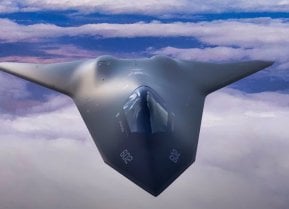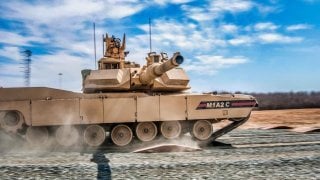Ranked: NATO's 5 Best Main Battle Tanks
In the ongoing tank war in Ukraine, Russia's T-72 has garnered attention, but NATO boasts impressive Main Battle Tanks (MBTs). The British Challenger-2, French Leclerc, American M1 Abrams, and German Leopard 2 exemplify NATO's advanced armor capabilities.
Summary and Key Points: In the ongoing tank war in Ukraine, Russia's T-72 has garnered attention, but NATO boasts impressive Main Battle Tanks (MBTs). The British Challenger-2, French Leclerc, American M1 Abrams, and German Leopard 2 exemplify NATO's advanced armor capabilities.
-The Challenger-2, with its robust armor and weaponry, and the Leclerc, known for its firepower and advanced systems, demonstrate significant strengths. The M1 Abrams, a U.S. favorite, is renowned for its combat performance.
-The Leopard 2 is considered NATO's best tank due to its versatility and protection. However, Ukraine's effective use of First-Person View (FPV) drones has proven more impactful against Russian tanks, signaling a shift in modern warfare.
Top 5 NATO Tanks: Powerhouses of Modern Warfare
There’s a tank war going on in Europe. Specifically, in Ukraine. And while the Russians have stolen all the headlines with their tanks, such as the T-72, being the iconic tank in this campaign, NATO has multiple classes of Main Battle Tanks (MBT) that they’ve been developing. Many of them are, on an individual basis, impressive weapons platforms with high-technology and next-generation defenses.
Starting from least to greatest, this piece will track the top five NATO tanks currently in existence.
5. Britain’s Challenger-2
Possessing composite “Dorchester” armor, this British MBT has served the British Army for decades. It is set to be phased out within the decade and replaced by the more advanced Challenger 3.
According to Forbes, British military doctrine “asked its tankers for years to fight defensively, while dug in.” The British had intended their Ukrainian allies to use the handful of Challenger-2s they gave over to the Ukrainians last year in a defensive posture. But the Ukrainian unit that deployed these systems was fighting offensively against Russian lines.
So the Challenger-2 MBT has thus far performed poorly in Ukraine. But this should not be seen as an indictment of this brand of British MBT.
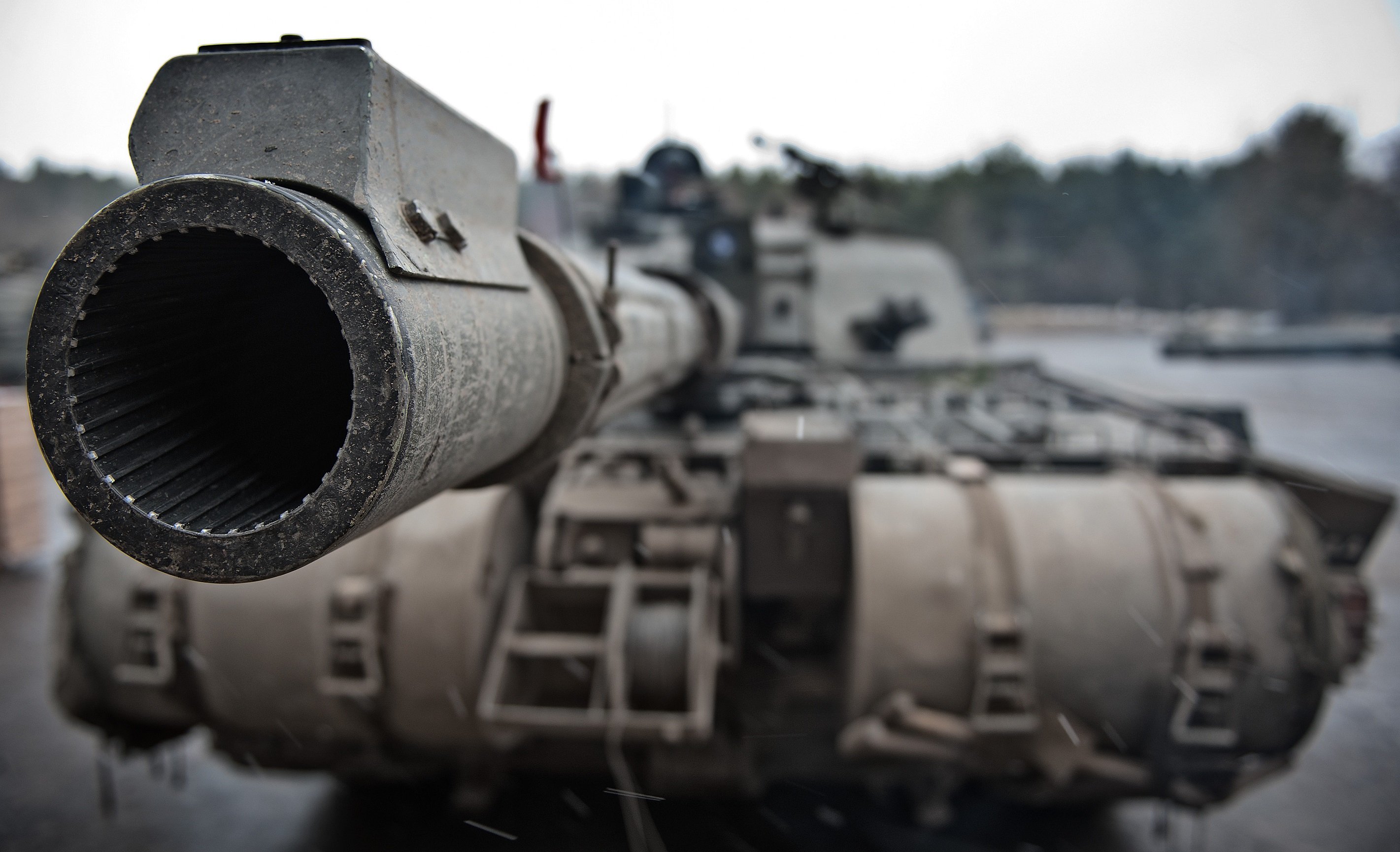
This tank carries 52 rounds for its L30A1 120mm main cannon. It has a coaxial 7.62mm L94A1 EX-34 chain gun as well as a 7.62mm L37A2 machine gun in the “commander’s cupola” on the tank. This British beast is powered by a Perkins CV-12 Diesel 1,200 horsepower engine, giving it a 280-mile range.
4. French Leclerc
This third-generation, French-built MBT “oozes with firepower,” as my National Interest colleague, Peter Suciu, describes it. Designed to replace the French Army’s aging fleet of AMX-30 tanks, the tank was originally conceived in the 1980s and first deployed in 1991. It is a widely respected MBT and is a continual reminder of how many people continue to misunderstand the potency and technical proficiency of France’s Armed Forces. The Leclerc is an example of that technical skill and martial prowess.
The Leclerc is armed with a 120mm smoothbore main gun that outstrips either the American M1 Abrams (more on that later) or the main gun on the aforementioned British-built Challenger-2. This tank, thanks to the assistance of an autoloader, can fire 12 rounds per minute while in the heat of combat.
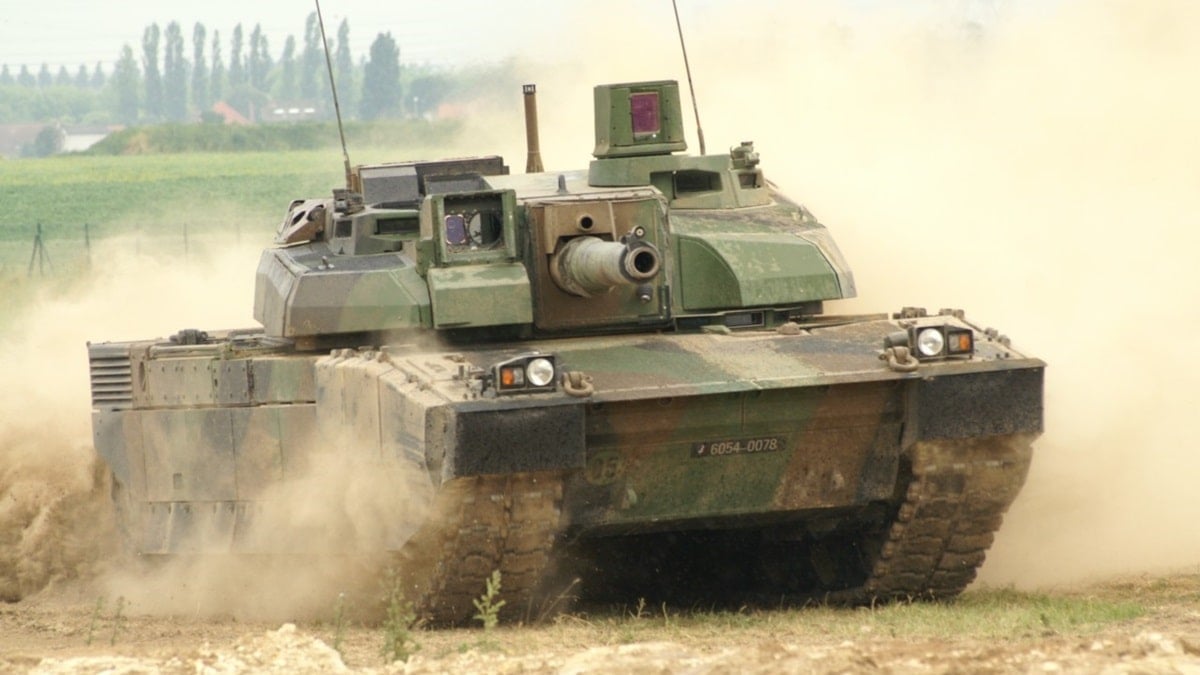
A modular armor system adaptable to the given threat environment protects the crew of the Leclerc MBT. The top of the turret is hardened to withstand direct attack, and the underside of the tank is protected with skirts to protect the mechanical operation of France’s advanced “land battleship.”
Speaking of the mechanics of the French war machine, it is powered by a SACM V8 high-pressure diesel engine, which delivers 1,500 horsepower. It can also be equipped with additional fuel tanks to increase its range.
3. American M1 Abrams
The crème-de-la-crème of the U.S. Army’s armored warfare arsenal is the M1 Abrams. It is so beloved and effective that the Army abandoned its long-running plan to replace the Abrams with an entirely new system and instead chose to do a major upgrade to the Abrams – the AbramsX. This tank cut its teeth in America’s successful mission to liberate Kuwait from Saddam Hussein’s Iraq in Desert Storm.
In fact, this was the U.S. tank that engaged in the last great tank battle of the 20th century (the Battle of 73 Easting). Ever since that time, the Abrams has been viewed as the greatest tank in the world. And while it is consistently a top-tier tank, in fact, it is not the technologically best tank in the NATO alliance – that falls to Germany’s Leopard 2.
As for the capabilities of the legendary Abrams tank. The newest variant of the tank has a top speed of 42 miles per hour (not bad for an armored juggernaut like the Abrams). It’s got a 120mm smoothbore cannon as well as a 7.62mm M240 coaxial machine gun and a .50 caliber M2 machine gun. Its range is 265 miles.
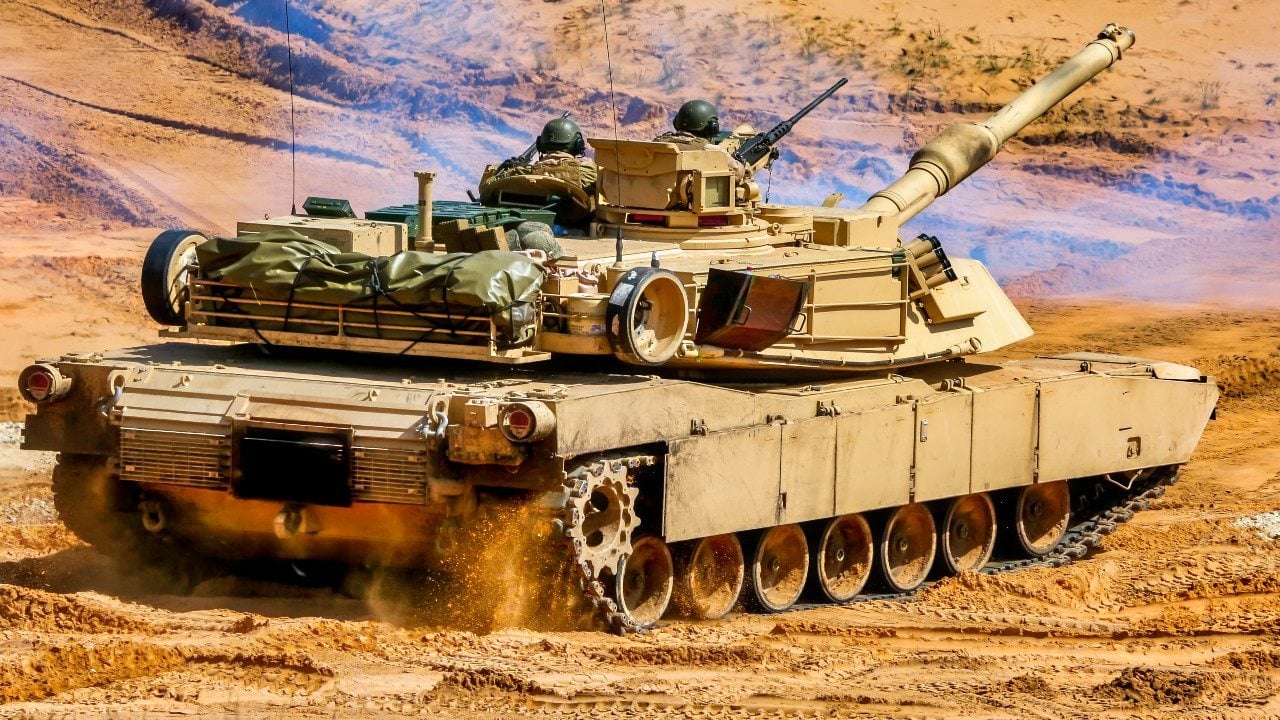
Of course, it has limitations and those are being tested in Ukraine. Still, this is one of the best tanks in the NATO arsenal and, when used by properly trained crews, is a killer on the battlefield.
2. Germany’s Leopard 2
The Germans have long been known for their cutting-edge tank design. The Leopard 2 proved so popular that it in addition to Germany, it serves in the armies of Austria, Canada, Chile, Denmark, Finland, Greece, the Netherlands, Norway, Poland, Portugal, Singapore, Switzerland, Sweden, Spain, and Turkey, with more that 3,200 tanks produced over the last several decades, according to Army-Technology.
A newer variant of the tank was produced in 2010 – the Leopard 2A7+ – that features a modular protection kit, improved sustainability, and increased mobility. Other variants include the Leopard 2 A6M, Leopard 2 A5, Leopard 2 A4, and Leopard 1 A5. Increased mine protection was added to the tank in 2004, which allows for tank crews to survive an anti-tank blast beneath the tank without suffering any injuries. It is one of the best-protected MBTs in the world.
A suite of advanced optical gear gives tank crews significant advantages in the heat of combat. The engine is an MTU MB 873 diesel engine, coupled with a Renk HSWL 354 transmission.
The armaments consist of a 120mm L55 Gun from Rheinmetall Waffe Munition, which provides major increases in velocity, range, and armor protection over its rivals. This main gun is compatible with 120mm ammunition and high-penetration rounds. Rheinmetall built the LKE 2 DM53 kinetic energy ammunition to allow for the Leopard-2 to fire up to 5,000m.
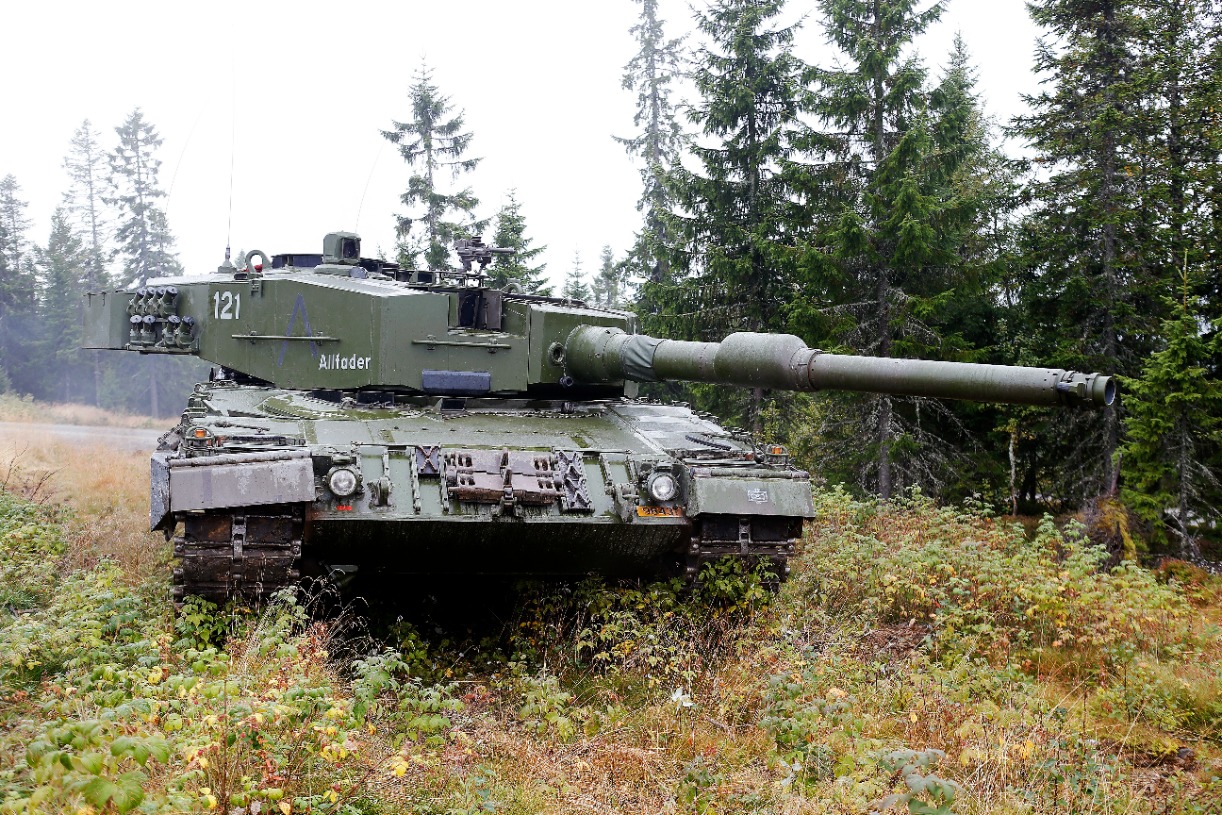
Suffice to say, of all the tanks NATO has at its disposal, the German-built Leopard-2 is the greatest of them.
1. Ukraine’s First-Person View Drones
If the point of a tank is to both destroy other tanks while breaking through enemy lines, it should be noted that the number one NATO anti-tank system is not another tank at all. Since the start of the war, Ukraine has mastered the use of First-Person View (FPV) drones to use against Russia’s massive tank arsenal. These drones have proven instrumental in slowing the Russian advance.
No other tank that the Ukrainians have used, not even the ones listed above, have been as useful against other tanks and breaking Russian lines as these cheap, easy-to-use FPV drones have been.
These unmanned systems prove that the age of tanks will be dominated by drones.
About the Author
Brandon J. Weichert, a National Interest national security analyst, is a former Congressional staffer and geopolitical analyst who is a contributor at The Washington Times, the Asia Times, and The-Pipeline. He is the author of Winning Space: How America Remains a Superpower, Biohacked: China’s Race to Control Life, and The Shadow War: Iran’s Quest for Supremacy. His next book, A Disaster of Our Own Making: How the West Lost Ukraine, is due October 22 from Encounter Books. Weichert can be followed via Twitter @WeTheBrandon.
All images are Creative Commons.
From The Vault
